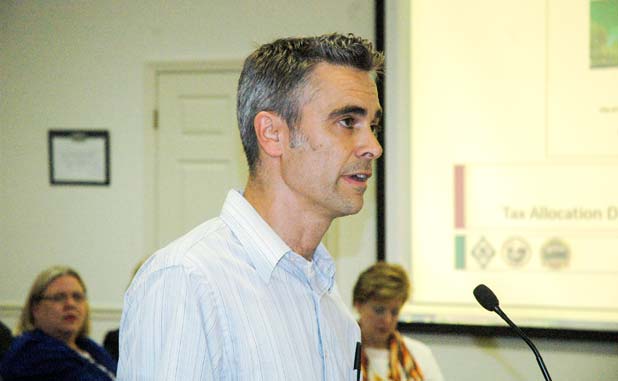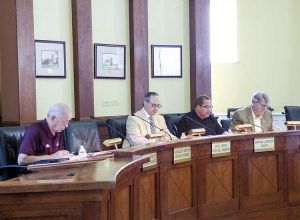The Fayette County Board of Education on Nov. 2 heard a request from Fayetteville that the 75-acre area included in the new downtown master plan be included in the city’s Tax Allocation District (TAD) map approved by voters in 2013.
Wismer said the current TAD area, which represents approximately 4 percent of the city’s tax digest would increase to approximately 5 percent if the request is approved by the school board and the Fayette County Commission.
The area involved in the master plan includes approximately 75 acres that encompasses the school system’s central office and bus barn, the Sams property adjacent to Grady Avenue and the adjoining 38-acre property that extends down Grady Avenue to Ga. Highway 54.
Describing the proposed additions to the TAD map, Wismer said it would be a re-set of the TAD district and would include a small area along Church Street due to the street’s planned extension as part of the upcoming Hood Avenue/Ga. Highway 92 transportation project.
Wismer said another part of the TAD re-set would be to eliminate a small area on South Glynn Street.
The school board is expected to make a decision on the request in December.
Fayetteville voters approved the TAD district in 2013. The district also required approval by the school board and county commission since it involves freezing property taxes within the TAD area.
If approved by the school board and county commission, the current property tax rate on the newly-included parcels will be frozen as they were with the initial TAD district. Tax revenues will continue to be collected at the same rate each year through the term of the TAD, which could range from 10-25 years unless paid off early.
Revenues in the TAD fund cannot be used for general fund purposes.
With the TAD, it becomes a matter of a developer wishing to create a redevelopment project. If so, the incremental increase in the value of the property, the change in tax value, will flow to a fund used to create needed infrastructure or pay off an applicable project bond.
Without the TAD as an incentive for redevelopment, it becomes a question of whether a developer would choose to undertake a project in one or more of the areas that continue to deteriorate or remain undeveloped.













Leave a Comment
You must be logged in to post a comment.